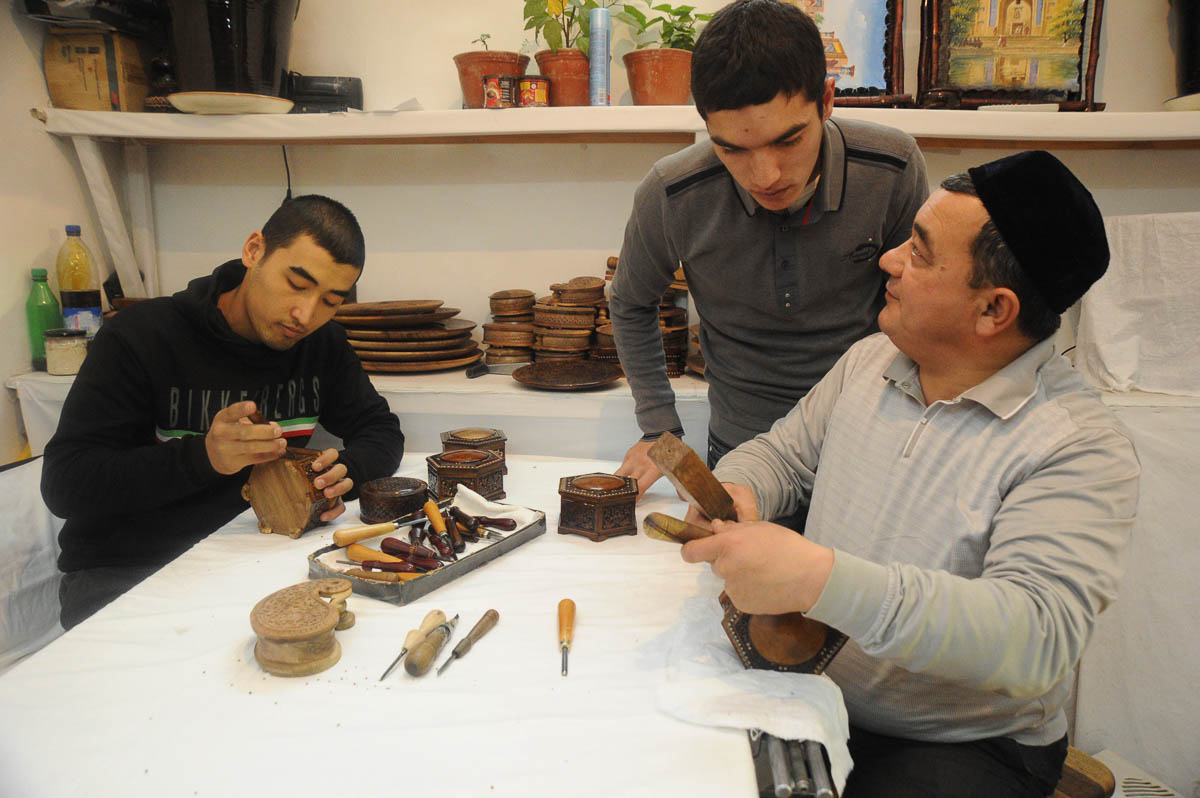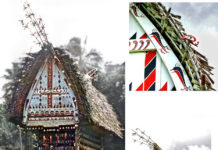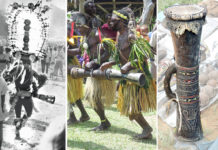Uzbek masters of wood carving produced not only a variety of household items, but also created carved wooden columns, doors, and other elements of architecture. The extensive use of carved wooden columns, doors and other architectural elements can be observed in the architecture of the capitals of Uzbek khanates of Khiva, Bukhara, Kokand, as well as in Samarkand and Tashkent.

The different kinds of woodcarving and contour carving (chizma), a background-free method, with background and diaglyphic carving with deep relief pierced work (shabaka). With background carving, flat-relief pattern was created by deepening and sampling the background. With a background-free carving, a three-edged hollowed out or incut pattern was used. These kinds of carving were different in their artistic expression as well. Paper templates for pouncing were used for patterns. Patterns were also drawn with the ruler and mathematical compass, outlining the geometric grid (pargori). In Uzbekistan, only the best local wood is used for carving, such as walnut, sycamore, elm, juniper, mulberry, poplar and apricot. Every type of wood is processed and dried before being used: they are placed in a dry, warm room for a long period of time. Range of wooden items with carving is wide and covers both the architectural details (doors, panels and friezes) and a variety of household items (decorative tables, stools, cupboards, pencil boxes, etc.)
One of the leading centers of woodcarving is Khiva. The classic Khiva art of woodcarving can be found in the columns and doors of the Ichan-Kala complex (carved columns in the interior of the Juma Mosque monument). Prominent representatives of the Khiva school of carvers is Palvanovs dynasty. Craftsmen of this dynasty carved columns and doors of Khiva in nineteenth and early twentieth century. A fine work by famous craftsman from Kokand, K. Khaidarov, is widely known. His work has embodied the best traditions of Kokand school of woodcarving.
Along with decorating of the building, the wood carvers used to produce significant amount (or assortment) of the household items. Traditions of such well-known Tashkent masters as S. Hodzhaev, M. Kasymov, A. Faizullaev, H. Kasymov, N. Ibragimov, were continued in the 1990s by A. Azlarov, descendant craftsman M. Ibragimova, S. Rakhmatullaev, H.Hasanov and others.
In 1990s, the situation with the development of wood carving began to change due to changes in market conditions. Today wood carving craftsmen from Kokand, Khiva and Samarkand are focused on carrying out orders for the interior of architectural structures, which is their main source of income. Certain items, frequently produced and popular and in the past are disappearing, such as multifaceted decorative tables and wooden screens with pierced work carving. Household items take the form of a souvenir and is mainly manufactured by craftsmen from Tashkent.





